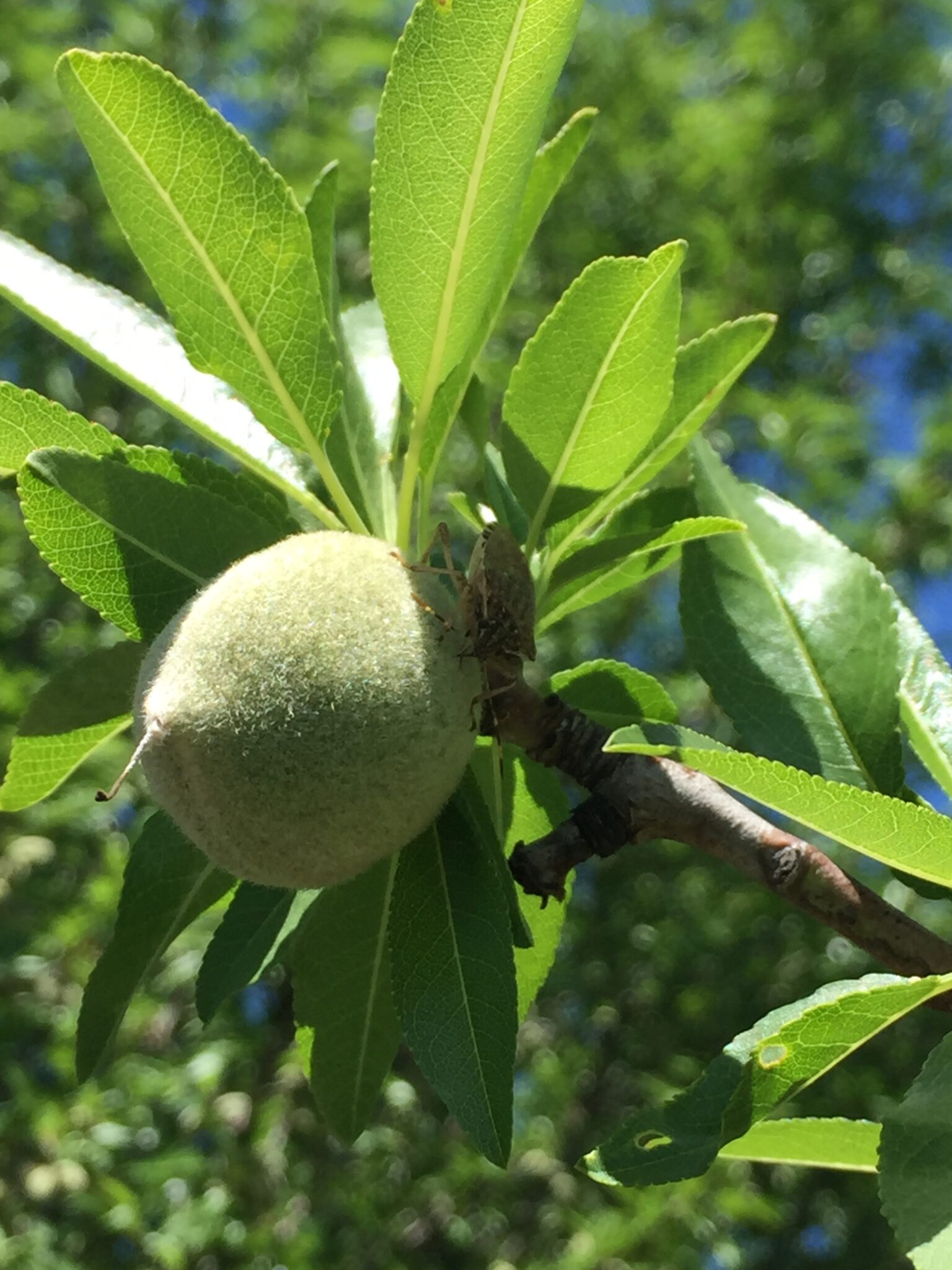
There was high leaffooted bug populations in almonds this year and those higher numbers contributed to early-season nut drop and significant crop damage at harvest.
UCCE IPM advisor Jhalendra Rijal said he considered LFB populations in almond orchards were higher than normal in April through May. Timing of the feeding by from piercing, sucking insects determines if the immature nuts drop from the tree or if the feeding causes damage to the kernel, causing rejection by processors. Leaffooted bugs are a species of true bugs that have mouth parts that can pierce immature nuts and suck out juices. Stink bugs pressure, Rijal said, is also trending higher.
Mel Machado, director of member relations at Blue Diamond confirmed that crop damage due to plant bugs, stink bugs, leaffooted bugs and possibly the invasive brown marmorated stink bug has increased in recent years.
“At one time those large bugs were occasional pests in almonds, but now we are seeing mounting damage,” Machado said.
The damage, called brown spot, occurs before shell hardening when the insects pierce the kernel to feed. It causes a depression on the surface of the kernel as cells break down at the feeding site.
Feeding by plant bugs and native stink bugs after shell hardening generally do not damage the kernels. However, brown marmorated stink bug, a new invasive pest, can cause kernel damage mostly by producing ‘brown marks’ even after shell hardening
Rijal said visual inspections for all true bugs and trap-based monitoring for brown marmorated stink bug should be used in orchards to detect infestations. There are currently no treatment thresholds for leaffooted and stink bugs in almonds. Spring infestations, either by the leaffooted bug or by BMSB, are more critical as the nuts are much vulnerable to abortion and drop.
For all true bugs, pyrethroids (bifenthrin, lambda-cyhalothrin, esfenvalerate), and neonicotinoids (clothianidin) are considered effective. However, keep in mind that the use of these broad-spectrum insecticides in the early part of the season likely impacts the natural enemies of mites and other pests. The UC IPM Pest Management Guidelines for native stink bugs, brown marmorated stink bug and leaffooted bug provide specific insecticides, rates, and potential effectiveness and impact on the natural enemies.












